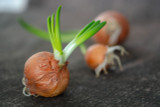A Guide To Growing Cilantro And Coriander
Growing cilantro and coriander is a breeze, as this adaptable herb thrives in a variety of environments. Fresh cilantro enhances numerous signature dishes from diverse cuisines. Harvest the seed heads of this popular plant for coriander to add depth and complexity to your favorite meals, or use the leaves for a burst of fresh flavor. Let's explore how to grow cilantro!
The Difference Between Cilantro and Coriander
Cilantro (the leaves and stems) and coriander (the seeds) come from the same plant. The entire plant is referred to as cilantro (Coriandrum sativum), while the seeds, obtained from fully grown flower stalks, are called coriander. Ground or crushed coriander is also available. Coriander's flavor is similar to cilantro leaves, but with a more earthy undertone.
Should You Sow Cilantro Seedlings or Seeds?
You can sow cilantro seeds directly in the soil or transplant seedlings. However, most gardeners find success with direct sowing, as cilantro grows quickly even in cooler temperatures and its taproot doesn't appreciate being disturbed.
When using cilantro seedlings, be cautious not to damage the cilantro plant's taproot. If the taproot reaches the bottom of the seed container, the plant will start to flower and bolt prematurely unless transplanted in time.
Determining the Time to Grow Cilantro
Mid-to-late spring and late fall are the best times to grow cilantro, as it prefers mild temperatures. The plant barely tolerates freezing temperatures.
Sow seeds directly in the garden when the soil temperature exceeds 55 degrees Fahrenheit. Plant cilantro seedlings in late spring or late summer for an early harvest.
Soil Preparation Tips for Growing Cilantro
Cilantro thrives in well-drained, nutrient-rich soil. To give your cilantro a healthy start, enrich the soil with compost. Although it grows best in soil with a pH between 6.2 and 6.8, the plant is quite adaptable and can flourish in a variety of conditions.
For cilantro grown solely for its leaves, sow seeds 1/2 inch deep and 4 inches apart. If you wish to produce coriander seeds, space the seeds 10 to 12 inches apart.
When transplanting cilantro seedlings, be cautious not to damage the fragile taproot. Smaller transplants generally have a higher success rate. Dig a hole large enough for the seedling's root ball, gently remove the plant, and then place it back in the hole. Fill the area around the cilantro seedling and gently press the soil with your hands to secure it. Water the plant adequately.
Cilantro completes its entire life cycle in just a few weeks, from seeding to flowering. The plant has a longer lifespan in cooler or milder climates, but in warmer areas, it grows and dies rapidly.
Where Can You Purchase High-Quality Cilantro Seeds?
Interested in growing cilantro and coriander in your garden? High-quality cilantro seeds are available from online seed distributors like Freedom Farms. Cruiser Cilantro is a classic variety known for its flavor, yield, and ease of growth. For those in warmer climates, this type of cilantro is a suitable choice.
Recent Posts
-
The Secrets To Growing Radishes In Containers
Container gardening is a popular way to grow vegetables like radishes. Growing radishes in container …26th Jun 2023 -
How To Successfully Grow Onions From Seeds
Many recipes use onions to give a strong taste and smell. Growing onions from seeds is better than b …26th Jun 2023 -
How To Grow Radishes At Home: A Step-By-Step Guide
Growing your radishes at home can be a rewarding and delicious endeavor. These crispy and spicy vegg …26th Jun 2023




